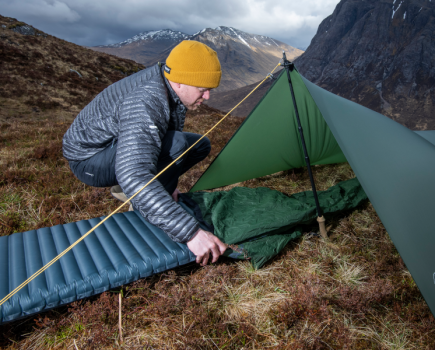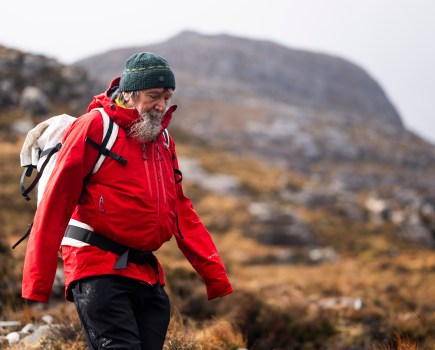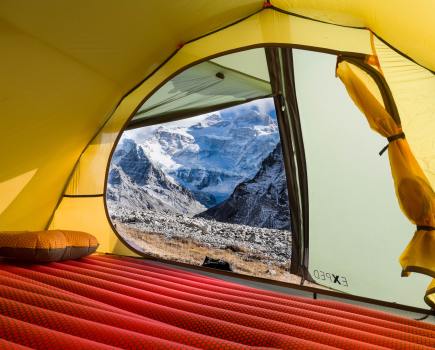Wild camping in the UK is all about taking your hillwalking to another level; it gives you all the same joy of getting away from it all, but by spending a night immersed in the landscape, you gain a new perspective.
Imagine unzipping your tent and waking up above a perfect sea of cloud, taking an early morning dip in a mountain tarn, or watching the sunset from a perch high in the Scafells or the Mamores. Wild camping gives you memories and experiences you just don’t get if you’re down in the pub by 5pm.
Main image: Wild camping on Dartmoor | Photo: Hanna Lindon
‘Wild camping’ in the UK means the act of making lightweight, temporary camps, solo or in small groups, in wild places, and in locations which have involved a substantial hike to put some decent distance between you and civilisation. Most crucially, it involves being a responsible steward of the local environment, taking away all your litter, and leaving no trace of your presence when you leave. Check out this article for more in-depth advice.
So, from things that go bump in the night to toilet-related embarrassment, veteran hill-bagger and wild camper James Forrest gives his answers to the most common questions we get asked by beginners here at The Great Outdoors.
1. I don’t understand the rules – is wild camping in the UK legal?
The legal situation is, well, a little convoluted, but here’s a concise-ish summary. In Scotland (except parts of the Loch Lomond shoreline) wild camping is legal, provided that you behave responsibly – see the Scottish Outdoor Access Code to find out more.
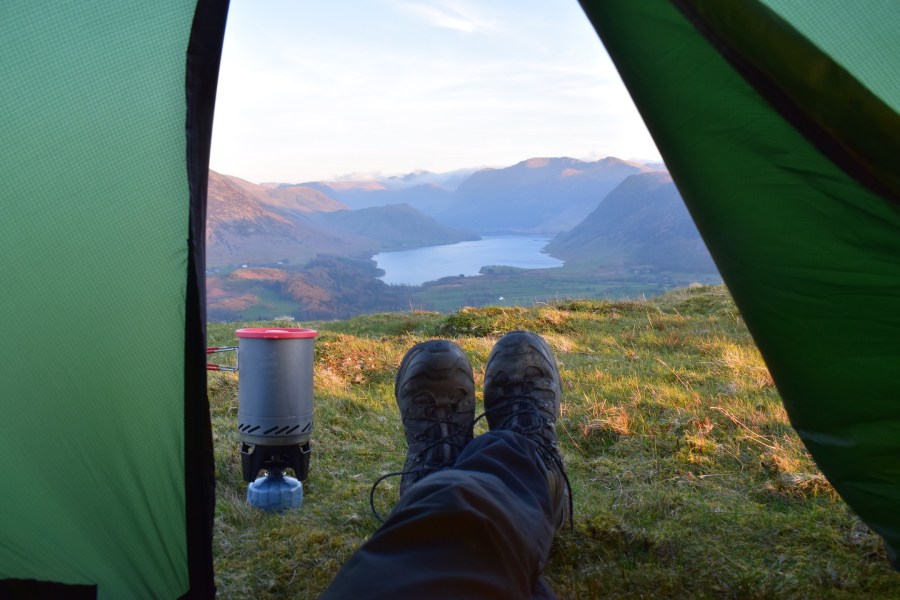
Wild camping in the Lake District. Credit: James Forrest
Technically, in the rest of England, Wales and Northern Ireland you can only wild camp with the landowner’s permission, but in practice, finding out who owns the land is not a simple process: see this government advice.
There is an exception on the commons of Dartmoor, where you are permitted to ‘freely’ wild camp without seeking landowner’s permission under the terms of the Dartmoor Commons Act 1985. (A wealthy landowner’s legal effort to have this right overturned in early 2023 initially succeeded, but eventually failed after the court of appeal ruled that wild camping was indeed permitted on Dartmoor.)
However, even in most mountainous areas – such as the Lake District – there is a long tradition of wild camping and sleeping high in the fells has been unofficially tolerated for decades. We’ve never heard stories of any responsible wild campers getting in trouble with the law. In all likelihood, the worst that could happen is being asked to move on by a farmer – but even that is very rare in the hills. If it does happen, be prepared to move on without a fuss.
2. Will being alone on a mountainside feel scary?
Of course, it might seem a little scary – and that’s fine. If you’re particularly apprehensive, take a friend on your first outing for moral support. Sleeping on a remote mountainside is very detached from our safe modern way of living and can leave you feeling vulnerable; you might think you’re too rational to believe in ghosts and bogey monsters but it can be hard to suppress those irrational fears. That’s what they are, though – irrational.
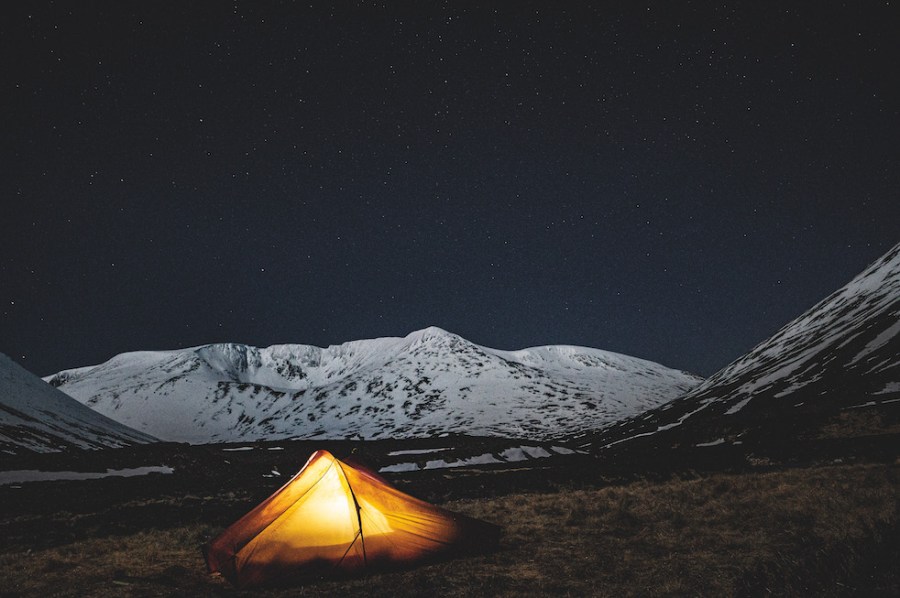
Wild camping in the Scottish Highlands. Photo: Chris Townsend
For many women, the question of safety can be a more real and serious one, as our article here explores. While some women feel uncomfortable heading into the hills and mountains alone, others do it happily – and even those with concerns often say they feel much safer in the outdoors than in urban environments.
3. What are the risks from animals or insects when wild camping in the UK?
Firstly, this isn’t Australia. Our one poisonous snake – the adder – is extremely unlikely to harm you, we don’t have any deadly arachnids, you’re not going to get attacked by a fox or badger, and stags and buzzards aren’t out to get you. Creepy-crawlies like the odd harmless spider or beetle might be wandering around, but some swift zip action will prevent them getting into your tent.
The most feared animal in the British Isles amongst wild campers and backpackers is actually one of the smallest: the midge. From late May to around the time of the first frost in autumn, clouds of these ferocious flies can make often make staying in one place to wild camp problematic in the Scottish Highlands (you can also find them in other places like the Lakes and Snowdonia, but to a lesser extent). But it’s still possible if you choose your campsites wisely – high, breezy places are best – and invest in some good insect repellent and midgeproof headnets. Midges are not dangerous, just a nuisance.
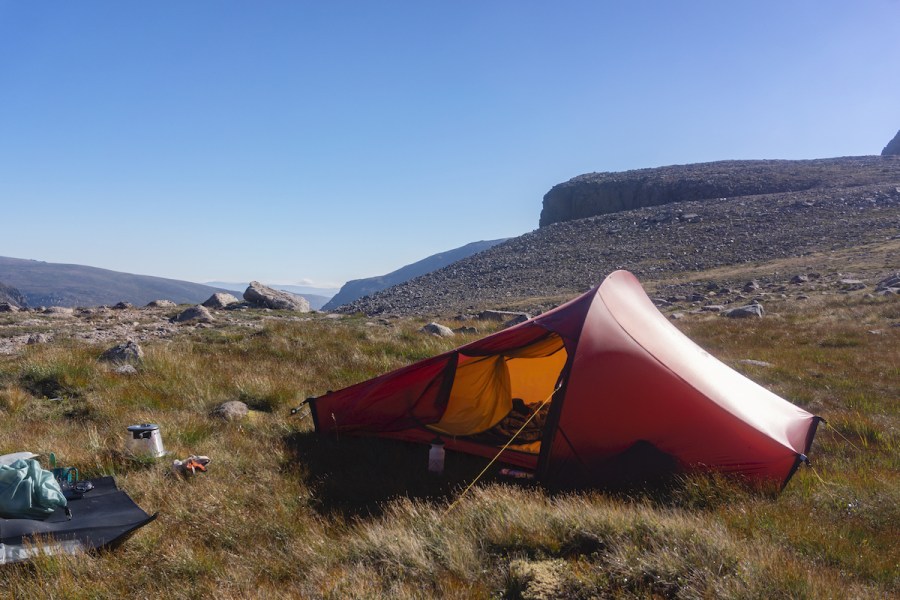
Breezy places are best to avoid the Scottish midge. Photo: Chris Townsend
Another biting insect to watch out for is the tick, which can transmit Lyme disease. Tuck trouser legs into socks and wear light-coloured protective clothing to avoid getting bitten by them. If you do, pick them out carefully with tick remover tool.
4. What if I need the toilet for a number two?
Of all the anxieties associated with sleeping wild, toilet fears seem to be a deal-breaker for many would-be wild campers – the awkwardness is just too much to handle. But with a little preparation, an al fresco call of nature doesn’t need to be a horrifying ordeal.
Simply find a quiet spot at least 50 metres away from paths and water sources, dig a hole 15-20cm deep with your trowel, do your adventure business, cover with dirt and carry away all toilet tissue in a sealed bag. Having an easily-accessible ‘toilet kit’ – toilet paper, spare zip-lock bags for waste, trowel and hand sanitiser, all neatly stored in a dry bag – will ensure good personal hygiene. To avoid being spotted ‘in action’, simply wander off-piste, squat behind a boulder or find a covert hiding place.
5. Last year media attention around wild camping in the UK was rife – is it a frowned-upon activity?
Media reports in 2020 catalogued some shocking examples of how not to go wild camping – large groups camping close to lakeshores, getting drunk, making huge fires, chopping down trees, littering and then discarding their cheap tents when it was time to go home. This reprehensible approach, sometimes labelled ‘fly camping’, is undoubtedly frowned upon. But ‘genuine’ wild campers, who respect the ‘leave no trace’ philosophy, shouldn’t be tarred with the same brush. If you take a responsible approach you’ll be met with a positive, supportive reaction from the outdoor community.
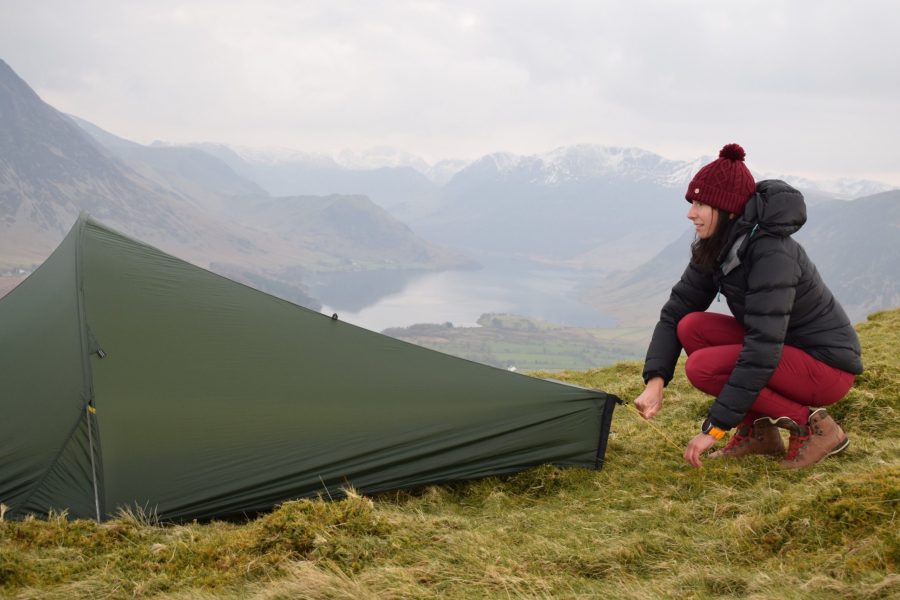
Pitching a tent in the Lake District. Photo: James Forrest
6. What do I do about food?
Approaches to food for wild camping and backpacking vary widely depending on the individual approach, but the simplest and most common is to take a lightweight stove, along with fuel and a cooking pot, and boil water to rehydrate dried backpacking meals (these meals tend to vary in quality, but the best are quite palatable – check out the May issue of The Great Outdoors for our test of the nicest). Stoves by companies like Primus or MSR are popular, as are integrated all-in-one cooking systems like those made by Jetboil.
7. How do I build up my skills?
Wild camping in the UK is not rocket science. It’s relatively easy to develop your skills and it’s not as complicated or technical as some aficionados make out. A great idea is to build up your confidence by first camping on campsites, or perhaps in your garden. Learn to erect your tent correctly (so that it’s taut, stable, well-ventilated and angled correctly to the wind), get used to your sleeping system (so you’re suitably comfy and warm), and practice cooking freeze-dried meals using your camping stove.
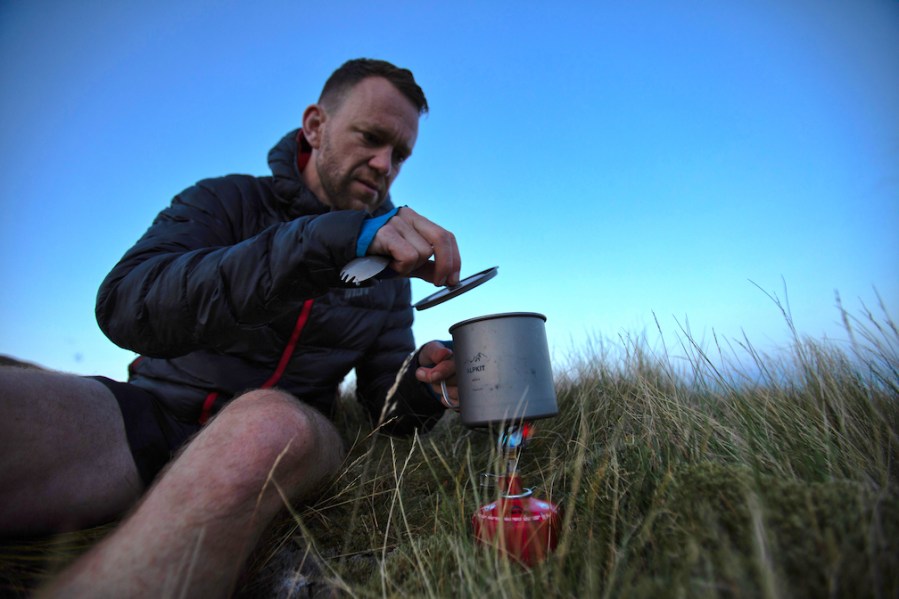
Boiling water for food. Photo: inov-8 / Dave MacFarlane
We might be biased, but you’ll find a wealth of advice on our website, and if you take out a subscription to the magazine you’ll be even more well-informed and ensure that you’re kept up to date on all the latest reviews and advice.
YouTube tutorials and trial and error are all excellent ways to learn these skills – and once you feel up to speed, you’re ready for your first wild camp.
8. If a storm arrives, will I get blown off a ridge or wake up in a flooded tent?
With a bit of common sense, you can easily avoid any weather-related calamities. The simplest tactic is to pick a good weather window. Keep a close eye on specialist forecasts like the Mountain Weather Information Service (MWIS) or the Met Office Mountain Weather forecast (www.metoffice.gov.uk) and only head out if the conditions look favourable.
For your first wild camp it’s often best to avoid ridges, summits or cols, which can be very exposed to wind and rain, and instead pitch lower down, perhaps in a sheltered little valley or in the lee of a hill – but be careful not to pick places which could flood in the event of rain. In an ideal world, look for a patch of flat, soft and dry grass.
9. What if I get halfway up a mountain and can’t find anywhere to camp?
The easiest way to avoid this pitfall is to do your research in advance, either by poring over maps at home or during an actual recce. Try to pick out a suitable location, somewhere flat and secluded with access to water. Next to a mountain tarn is a common choice and a good bet for your first outing – but be mindful that some high tarns in the likes of the Lake District can be extremely busy with wild campers, so it’s best to try and think outside the box if possible. Always choose somewhere high up, above the ‘intake wall’ – the wall at the highest elevation, which separates farmland from uncultivated mountainside. This is usually open access land, which is shaded yellow on 1:25,000 Ordnance Survey maps.
10. I feel the cold badly – will I be freezing at night?
With the right equipment you’ll be as snug as a bug in a rug, so don’t worry. Obviously a good-quality waterproof tent is your first layer of protection from the elements. Then you need a thick-ish sleeping mat to insulate you from the cold ground, and a cosy sleeping bag to snuggle within. Pick a sleeping bag with better temperature ratings than you’re likely to need – that way you’re prepared for an unexpected cold snap. Spare dry layers – including hat, gloves, insulated jacket, socks and thermal base layers – will also help you stay warm in your tent post-hike.
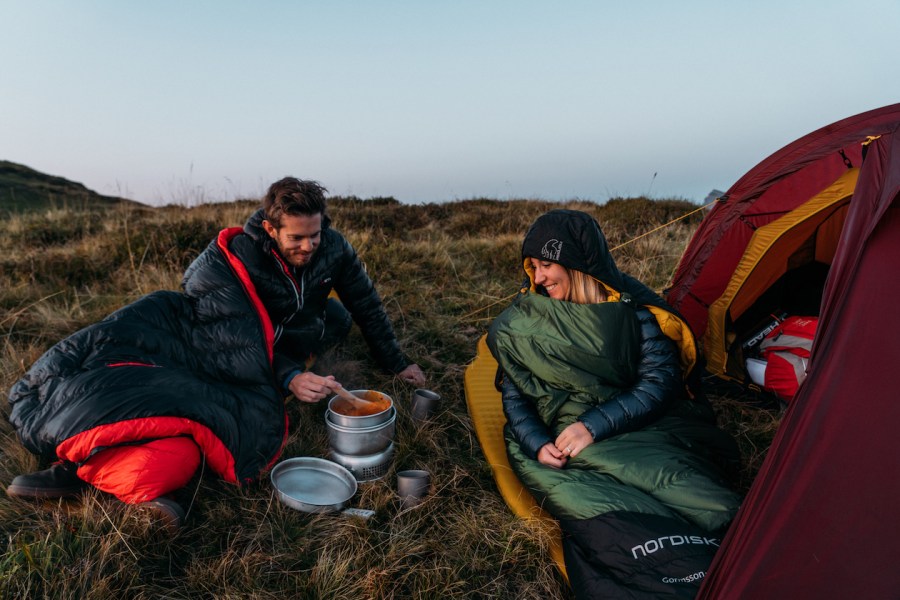
Good gear choices will keep you warm. Photo: Nordisk
11. How do I make sure the water I’m drinking is safe?
Modern technology makes this pretty easy. For drinking water, bottles with integrated filters such as the Water To Go are your best bet – simply fill up and drink. For cooking water, you’ll need to boil it, add water purification tablets or use a more advanced product such as the Sawyer 1-Gallon Gravity Water Filtration System. But if you’re only camping for one or two nights, you can probably carry in all the water you need for cooking.
12. What if I can’t sleep all night?
Everyone is different when it comes how easily they can sleep, but if it’s your first wild camp, there’s a good chance you probably won’t sleep that well, to be honest. But does it really matter? A broken night of sleep is a small price to pay for the magic of a night under the stars – when you look back on the memory the natural spectacle and the feeling of escaping it all is what will stand out, not the discomfort. Earplugs and an eye mask might help you nod off – or, if not, perhaps just try counting Herdwick sheep.
13. What precautions should I take to keep me safe?
Finding a more experience friend or guide to go with on your first wild camp is always strongly advisable. Not only will they have a better sense of where to go, it also means you can share equipment if you forget something, and ultimately there is backup if something goes wrong. Even so, you should still let someone know your approximate route, where you plant to camp and what time you’ll be home. That way, in the very unlikely event of an emergency, they can raise the alarm and provide useful information to mountain rescue. Always carry safety equipment – map, compass, GPS device, mobile phone, headtorch, powerbank (for recharging electronics) and first aid kit – and most importantly, know how to use them! Making a mental note of potential escape routes if things go seriously awry is another sensible strategy.
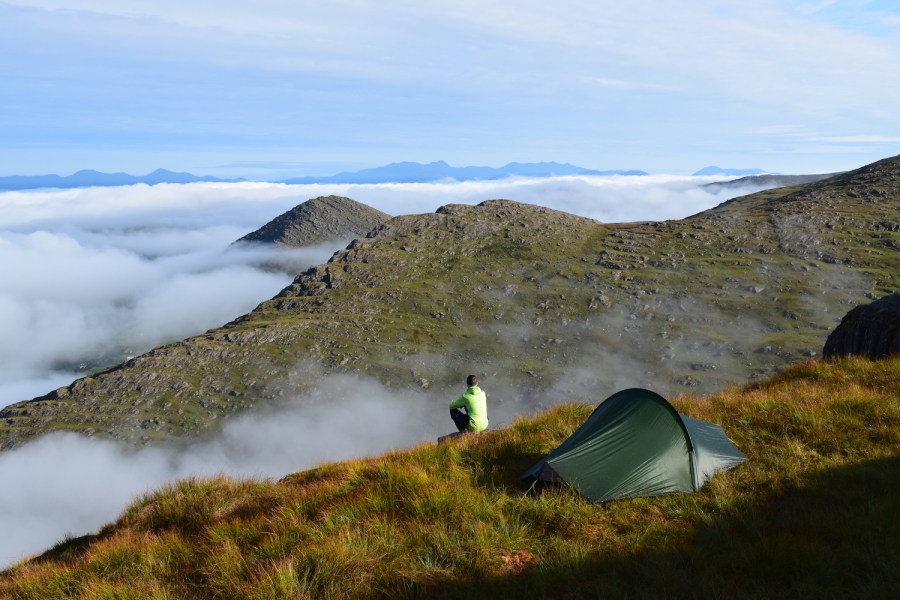
Waking up above the clouds in Ireland’s Caha Mountains. Photo: James Forrest
14. How do I keep my impact minimal when wild camping in the UK?
Over the last year or so there has been some confusion over the term ‘wild camping’, with media reports often conflating it with the sort of irresponsible roadside carnage-camping we saw many reports of last summer – but if that’s your bag, it’s unlikely you’ll be reading The Great Outdoors for tips!
Doing the right thing will ultimately give you a far more satisfying experience and enable you to be closer to nature.
Here are 10 tips for how to do wild camping in the UK right:
- Always leave no trace and carry away all litter.
- Pitch up late in the evening and de-camp early in the morning.
- Groups should be small and stay for one night only at each location.
- Never light fires and never chop down trees or vegetation.
- Perform toilet duties well away from paths and water sources.
- Bury all human waste with a trowel.
- Minimise your impact on the environment and respect wildlife.
- Camp on open access land, above the intake wall.
- Camp well away from hamlets and farms.
- Be quiet, camp discreetly and don’t be a visual eyesore.
Check out the May issue of The Great Outdoors for more expert advice on wild camping – where this article originally appeared – including reviews of the best two-person tents and backpacking meals; in-depth advice on how to find the perfect pitch; a wild camping gear buyer’s guide for beginners; and much more.




